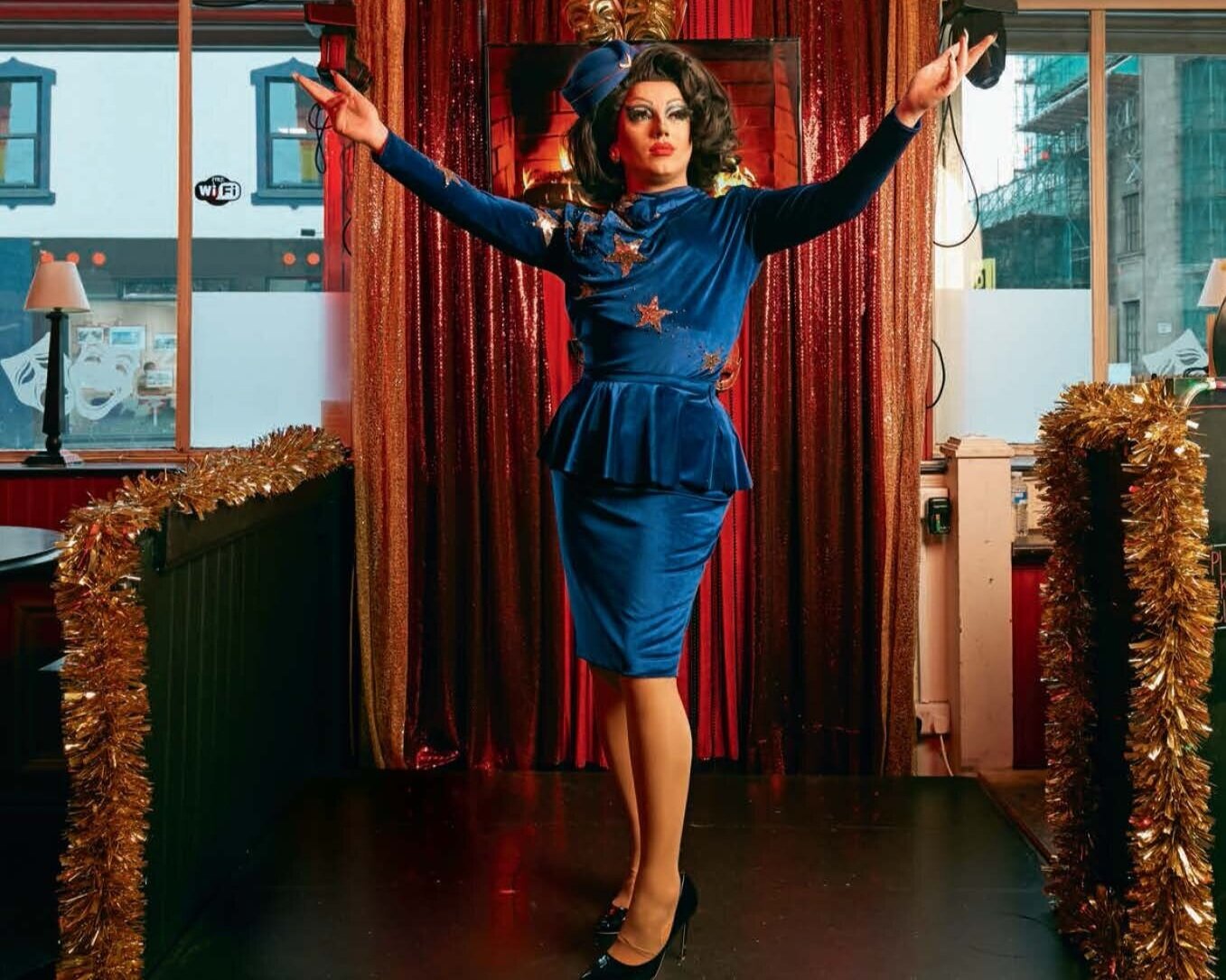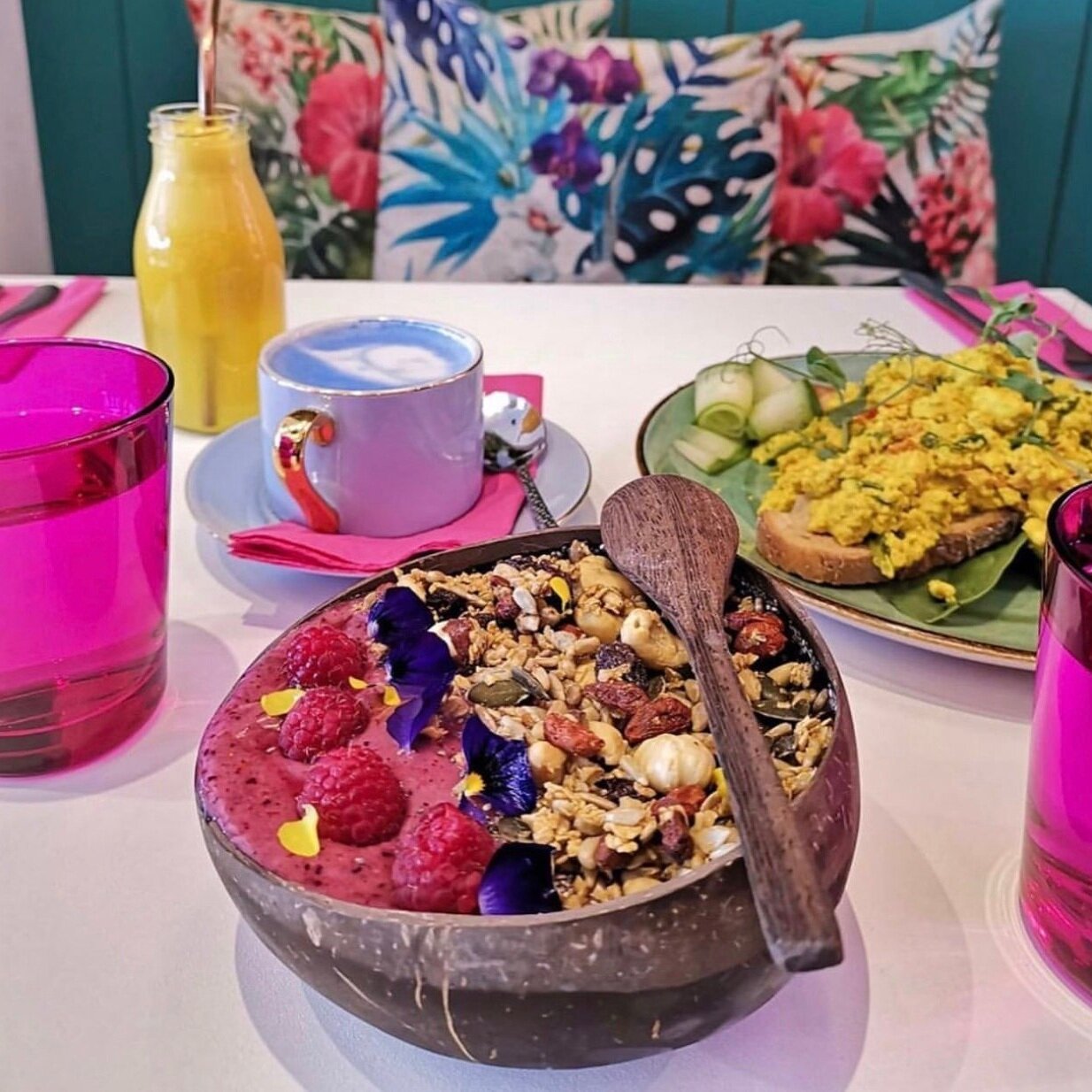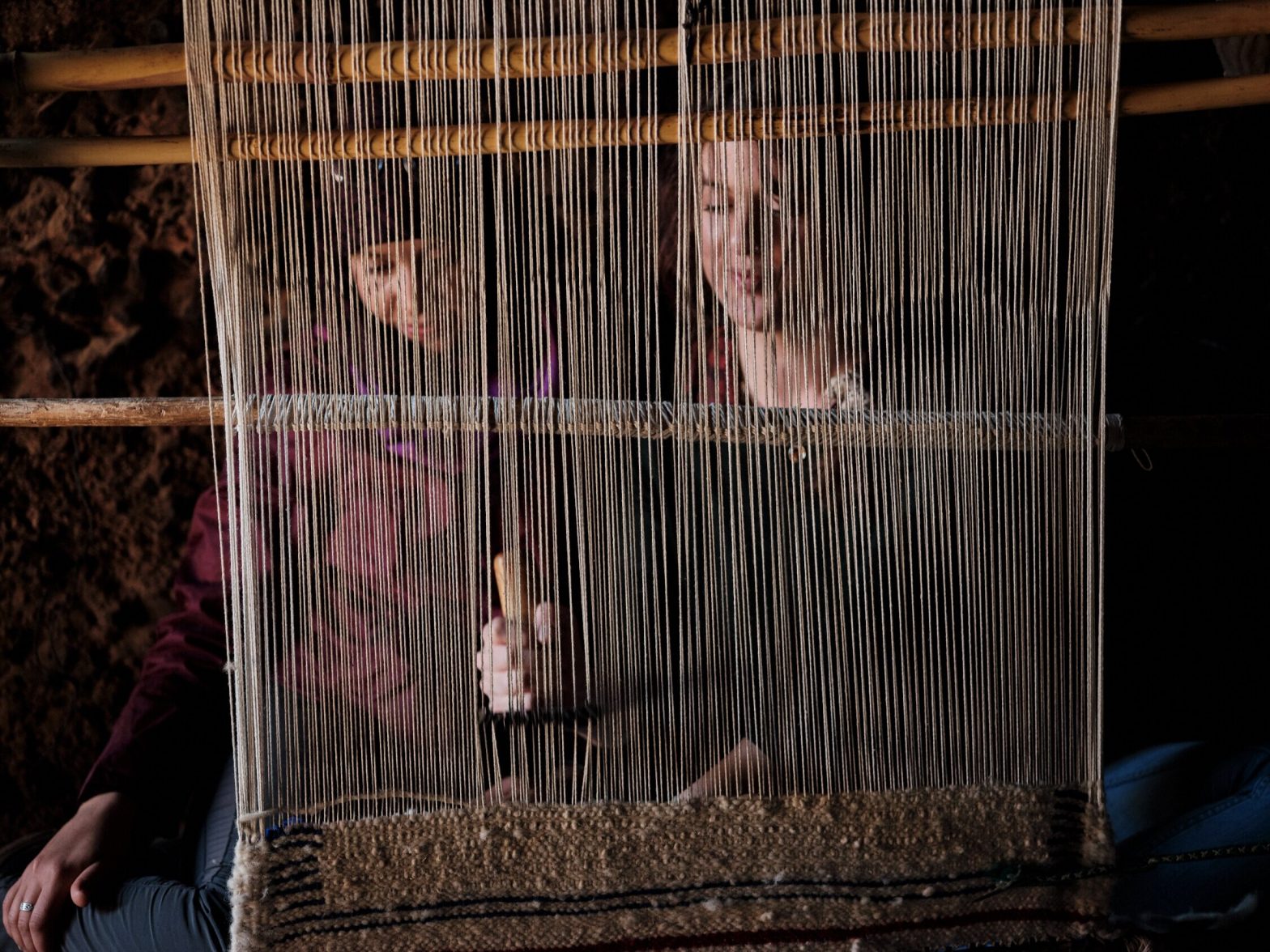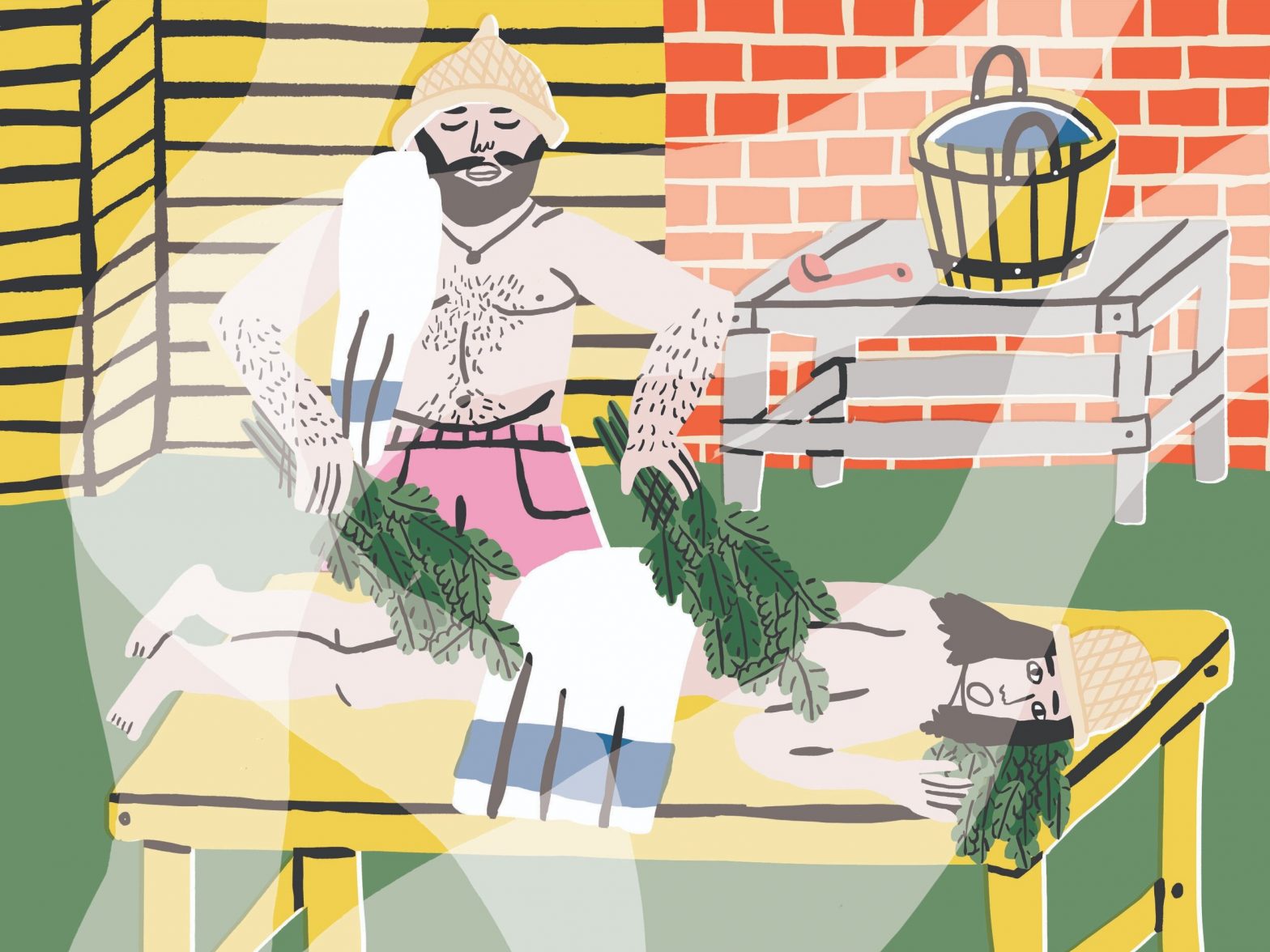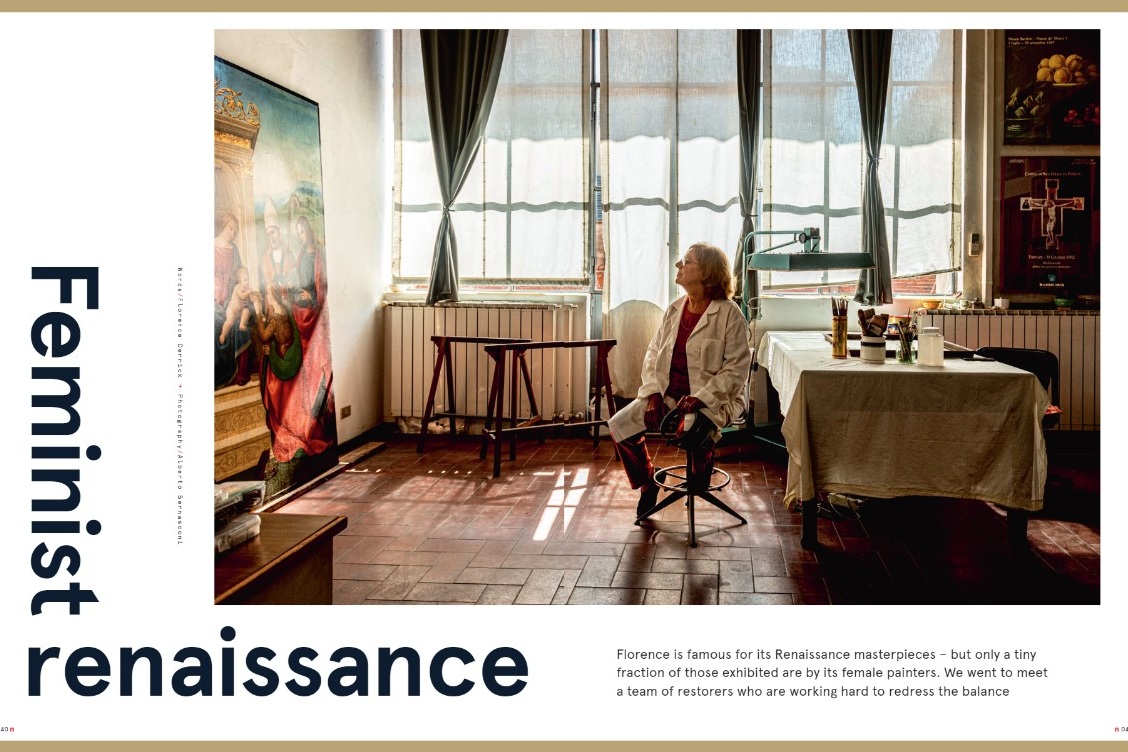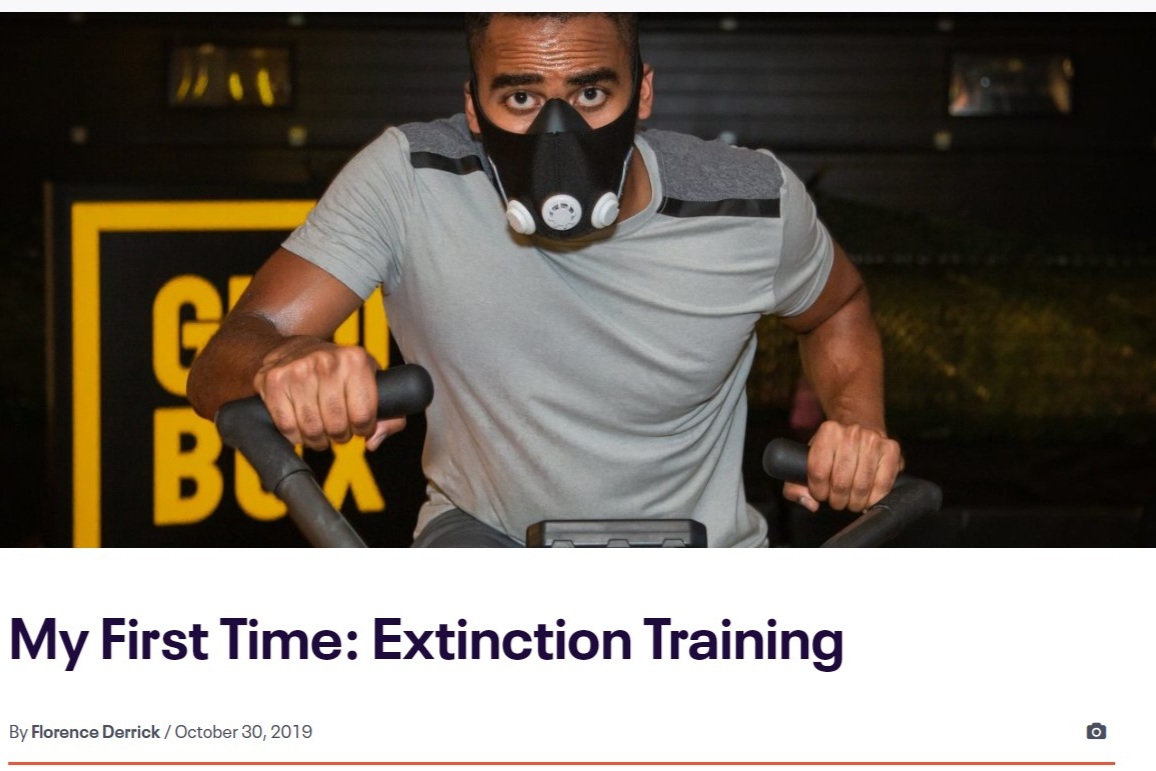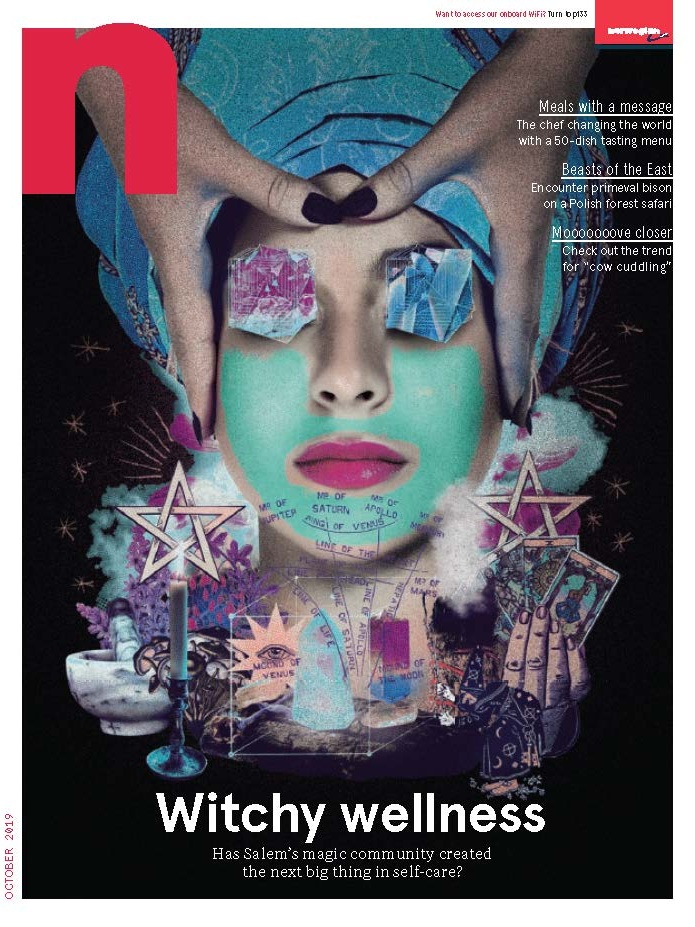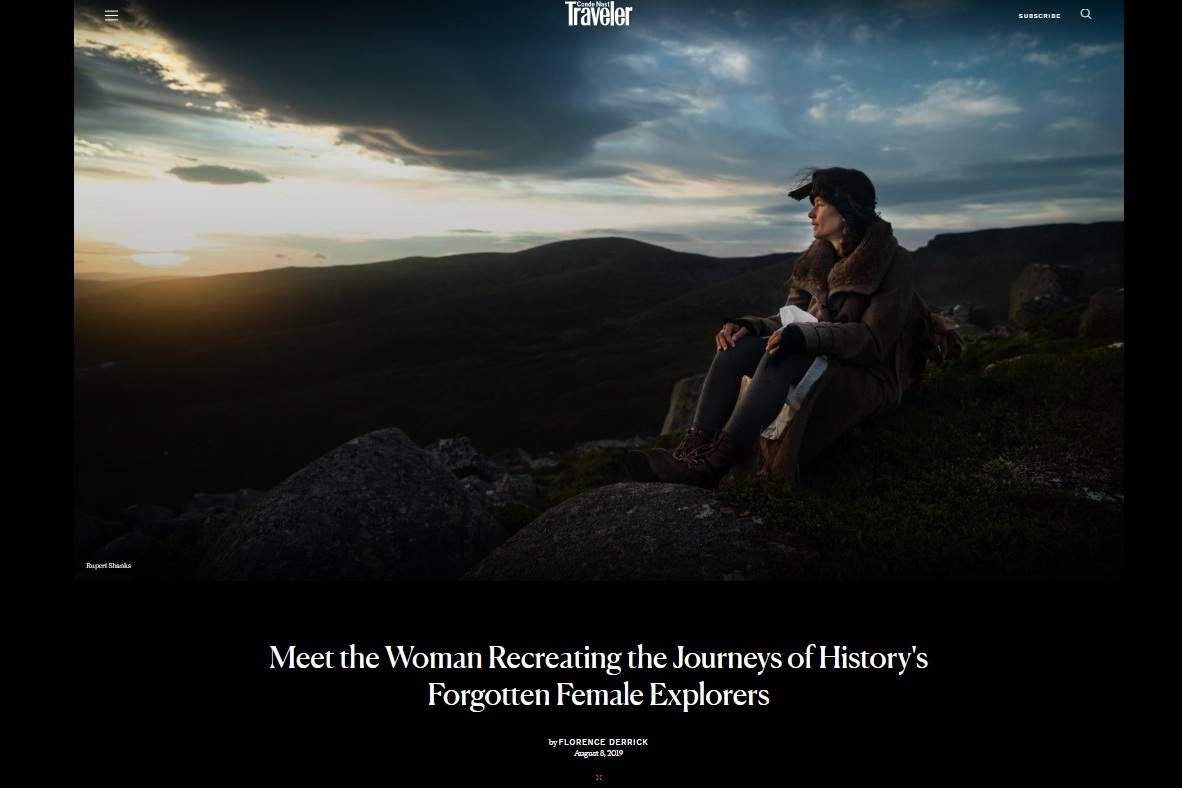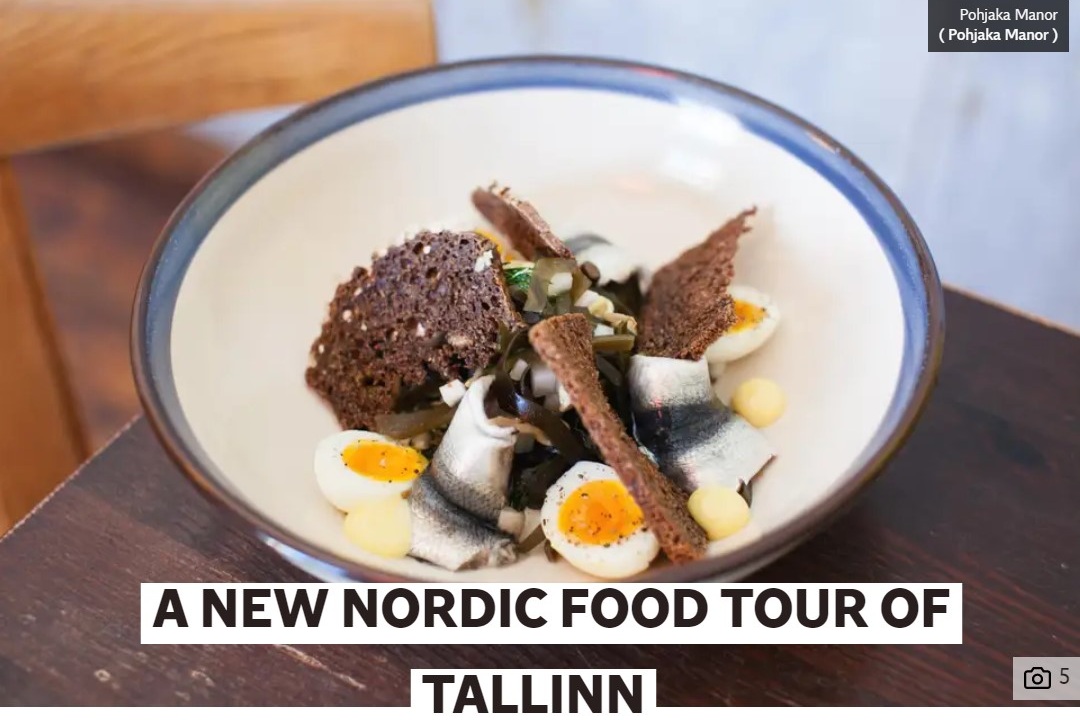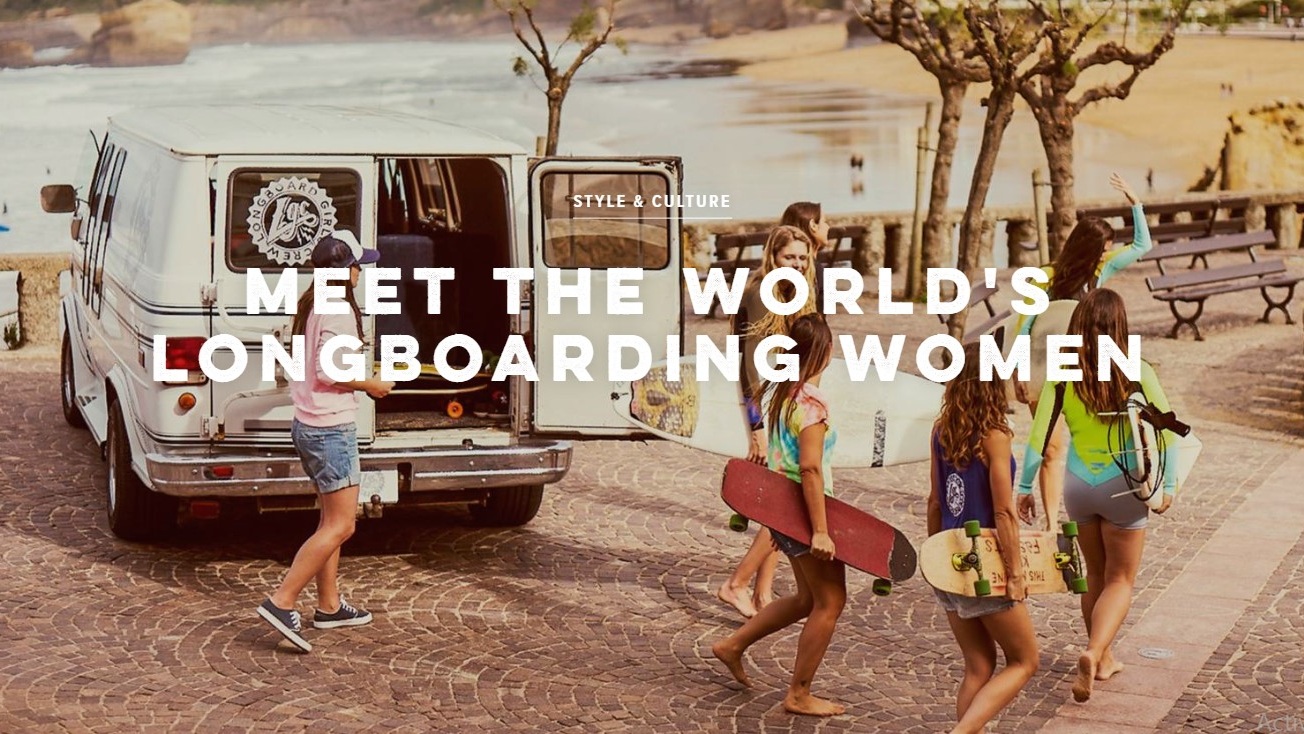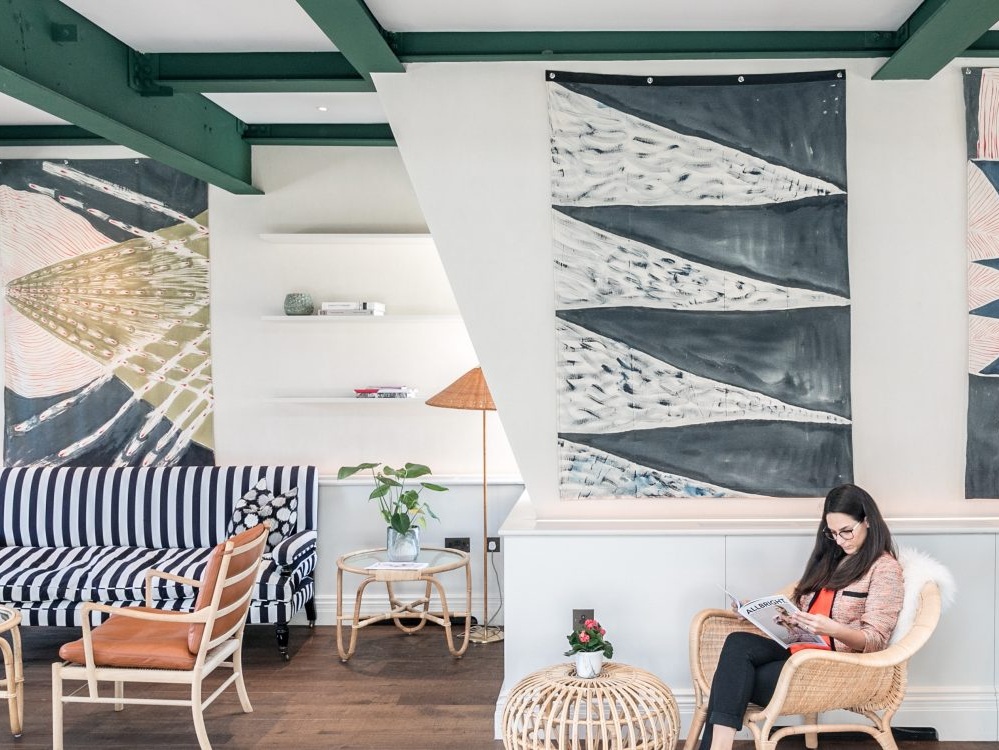Choriza May turns on the TV and gasps theatrically, teetering in her stilettos. She’s watching a report on the UK’s vote to leave the European Union. Gaping in wide-eyed shock under heavy false lashes and a beehive straight out of a Pedro Almodóvar movie, she turns to the several-hundred-strong audience, smooths down her royal-blue velvet dress, and launches into a lip-sync to Jennifer Hudson’s stirring Dreamgirls ballad. “There’s no way I’m living without you,” she implores. “I’m staying, and you’re gonna love me.” The crowd leaps to a standing ovation.
This is drag queen Choriza’s winning performance at Liverpool’s first Big Drag Pageant – a contest for “kings, queens, and everyone in-between” that arrived in the city last November. It’s the latest event to spotlight an art form that has long thrived in the port city that gave the world beloved British comedy drag queen Lily Savage, as well as the late gender-twisting Dead or Alive singer Pete Burns. A diverse range of performers and outfits is on show at the pageant: beards and hairy legs are paired with pleather miniskirts and frumpy leotards in a boisterous, lightly political mishmash that feels distinctly northern English.
Liverpool was recently put firmly back on the drag map thanks to local prodigy The Vivienne, winner of RuPaul’s Drag Race UK last November. It was the first British edition of the 11-season award-winning American show; the BBC version was less polished, peppered with crude slang and rough-and-ready Margaret Thatcher impressions.
The Vivienne’s raucous personality is typical of the down-to-earth comedy queens that Liverpool’s many cabaret clubs, such as The Lisbon Bar, Kitty’s Showbar and Superstar Boudoir, are known for. They fit into a wider scene in a city that claims to have an LGBTQ+ population equivalent to San Francisco’s, with a roster of gay clubs in its Stanley Street Quarter to match. You’ll catch resident queens most nights at the likes of Heaven, OMG and GBar, all nightclubs a couple of minutes’ walk from each other.
But just a few decades ago, Liverpool’s drag clubs were hidden from plain sight, despite the city’s busy port bringing in plenty of punters. “In the 1960s and 70s, seafarers arriving in Liverpool would use polari [a type of secret slang] as a language to get by without straight people knowing what they were talking about,” says Kitty Litter, the drag queen owner of the rainbow-painted Kitty’s Showbar. “When I started performing in the 1980s, queens looked more like your auntie or your mother than a superstar. Even now my whole costume can go in a carrier bag and no one would be any the wiser.” With tattooed hairy legs poking out from a dinner lady-style tabard, and purple, scrawled-on eyebrows, Kitty represents the northern-English antithesis of the preened, perfect-looking American queen pedalled by US icon RuPaul.
According to Kitty, drag performance took a nosedive between the 1980s and today, as tastes shifted. “Years ago, everyone wanted to be Lily Savage,” she says. “But then suddenly we had [British TV stars] Graham Norton and Alan Carr – camp comics that didn’t have to be in a frock.” Today, however, there’s a renewed appetite for outrageous, gender-shifting personas like Kitty, who performs at least three nights a week.
Social media has also had a hand in reviving drag in Liverpool. “If you perform in a bar, 50 people might see you, but post a video on Instagram and thousands see it all over the world,” says Choriza May. “It’s become such a window into drag. And then Drag Race has obviously helped a lot too.”
Even though The Vivienne was only recently crowned Drag Race UK champion, Choriza, who performs regularly in Newcastle and Liverpool, can already see an impact on the local scene. “It’s making everyone step up their game,” she says. “People who’ve been doing drag for years are now thinking that this is a job that can make them famous.”
Kitty and Choriza worry, however, that the groomed, photo-ready version of drag promoted by RuPaul risks pigeonholing performers, even as it makes the scene more accessible. Certain local promoters are setting out to address that. “Drag Race has done a lot for drag as a venture, but it does suggest that queens have to sit within this very defined box,” claims Pretentious Dross, a performer and producer at queer cabaret night EAT ME + Preach, in Liverpool’s Baltic Triangle area. “They’re predominantly white male. But there are so many people outside of the gender boxes – and the tradition comes from there, so let’s celebrate it.”
Dross draws from her theatre practice doctorate studies to blend drag with experimental live art, often mixing 1980s horror movie tropes with elements of New Romantic fashion. “When you go back to the origin of the word, ‘queer’ means oddness, something that doesn’t fit with the norm,” says Dross. “EAT ME + Preach provides a radical, queer platform for artists with accessibility issues, who are fighting against ableism, who are gender non-binary or trans – people who don’t generally get a gig in traditional drag venues and who don’t fit in the Drag Race box.”
The emergence of the Big Drag Pageant, while less radical than the EAT ME cabaret nights (Dross performs a Silence of the Lambs-themed act, using a raw chicken puppet of Buffalo Bill’s victims), shows another side to Liverpool’s diversifying drag scene, which is increasingly no longer confined to LGBTQ+ spaces. Events producer and drag promoter Tom Barrie – who recently started performing in drag under the name Dame Fanny De Faux – was tasked with organising the pageant after creating a successful family-friendly drag brunch show during Liverpool Pride, called Tuck Shop.
“I wanted Tuck Shop to be all-inclusive,” he says. “Until now, drag has normally been the domain of nightclubs or late-night TV. The response to our afternoon drag brunch from the younger audience was amazing. Some people view the drag scene as quite a frivolous thing – a couple of boys who just want to put on make-up and dresses, but it’s far from that. It’s a proper art form and it has the power to help younger people discuss issues of gender identity.”
Liverpool’s drag scene is on an upward trajectory. New cabaret venue On Point opened towards the end of last year, run by local queen Miss Tiara; Kitty’s Showbar will be adding rooms for overnight stays in time for Pride in July. It’s a microcosm of the growing popularity of drag performance across the UK: the self-styled “Europe’s largest celebration of drag”, DragWorld, launched in London in 2017, while the first Drag Fest UK festival will hit London and Manchester this June. But for Choriza, events like the Big Drag Pageant are more of a microcosm of the general Liverpudlian spirit.
“Liverpool has one of the most inclusive scenes I’ve ever witnessed,” she says. “It’s a city with a history of entertainment, so the drag performers here are real all-rounders – singing, comedy, the full package. That makes them powerful.”
